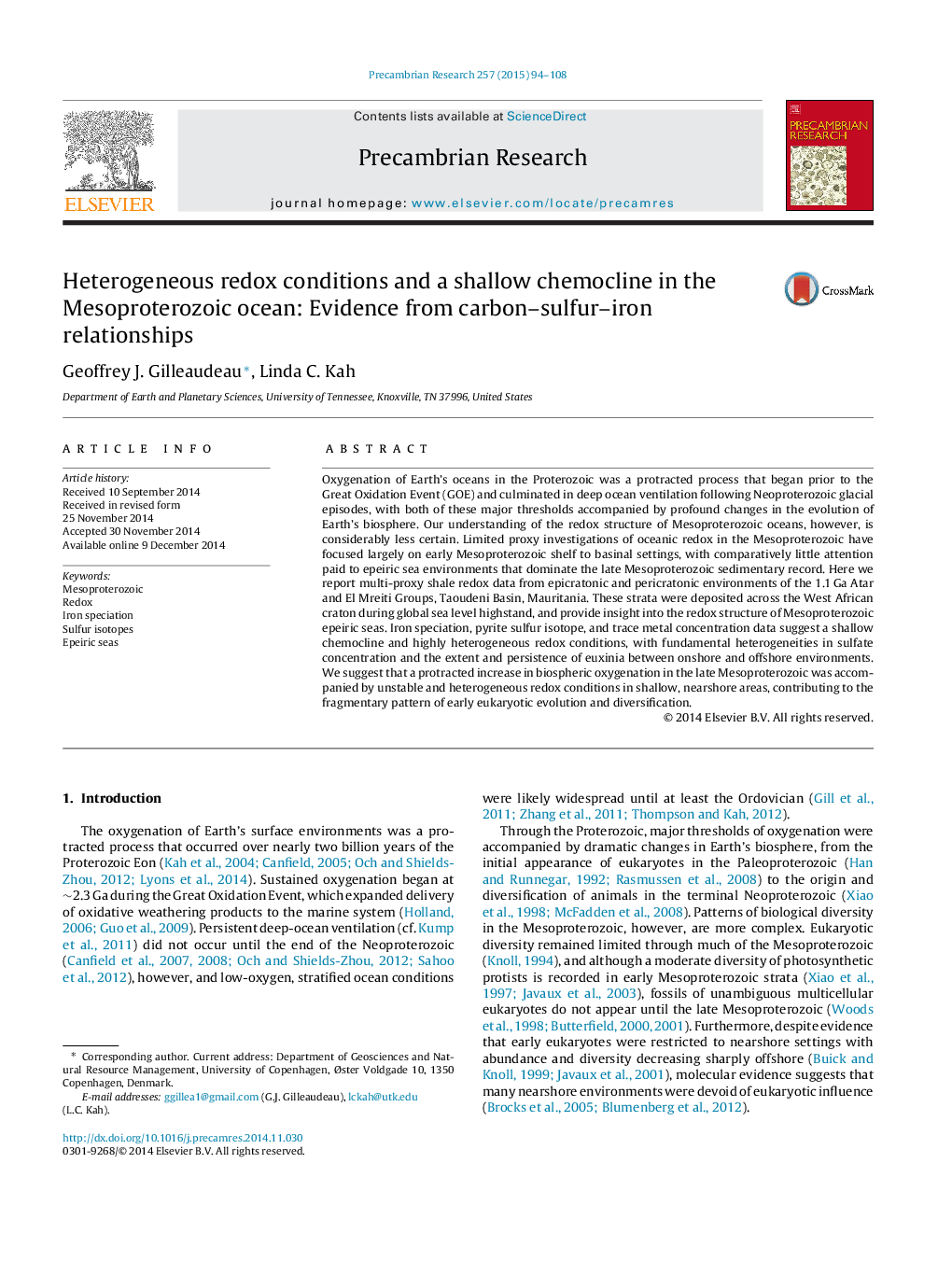| کد مقاله | کد نشریه | سال انتشار | مقاله انگلیسی | نسخه تمام متن |
|---|---|---|---|---|
| 4722854 | 1639618 | 2015 | 15 صفحه PDF | دانلود رایگان |
• We explore redox conditions across a late Mesoproterozoic (1.1 Ga) epeiric sea.
• We examine Fe-speciation, δ34Spy, and trace metals in the Atar/El Mreiti Group.
• A shallow chemocline intersected the seafloor in the interior of the flooded craton.
• Redox conditions were heterogeneous with persistent euxinia below wave base.
• Habitable zone for early eukaryotes was likely inhibited by redox heterogeneity.
Oxygenation of Earth's oceans in the Proterozoic was a protracted process that began prior to the Great Oxidation Event (GOE) and culminated in deep ocean ventilation following Neoproterozoic glacial episodes, with both of these major thresholds accompanied by profound changes in the evolution of Earth's biosphere. Our understanding of the redox structure of Mesoproterozoic oceans, however, is considerably less certain. Limited proxy investigations of oceanic redox in the Mesoproterozoic have focused largely on early Mesoproterozoic shelf to basinal settings, with comparatively little attention paid to epeiric sea environments that dominate the late Mesoproterozoic sedimentary record. Here we report multi-proxy shale redox data from epicratonic and pericratonic environments of the 1.1 Ga Atar and El Mreiti Groups, Taoudeni Basin, Mauritania. These strata were deposited across the West African craton during global sea level highstand, and provide insight into the redox structure of Mesoproterozoic epeiric seas. Iron speciation, pyrite sulfur isotope, and trace metal concentration data suggest a shallow chemocline and highly heterogeneous redox conditions, with fundamental heterogeneities in sulfate concentration and the extent and persistence of euxinia between onshore and offshore environments. We suggest that a protracted increase in biospheric oxygenation in the late Mesoproterozoic was accompanied by unstable and heterogeneous redox conditions in shallow, nearshore areas, contributing to the fragmentary pattern of early eukaryotic evolution and diversification.
Journal: Precambrian Research - Volume 257, February 2015, Pages 94–108
